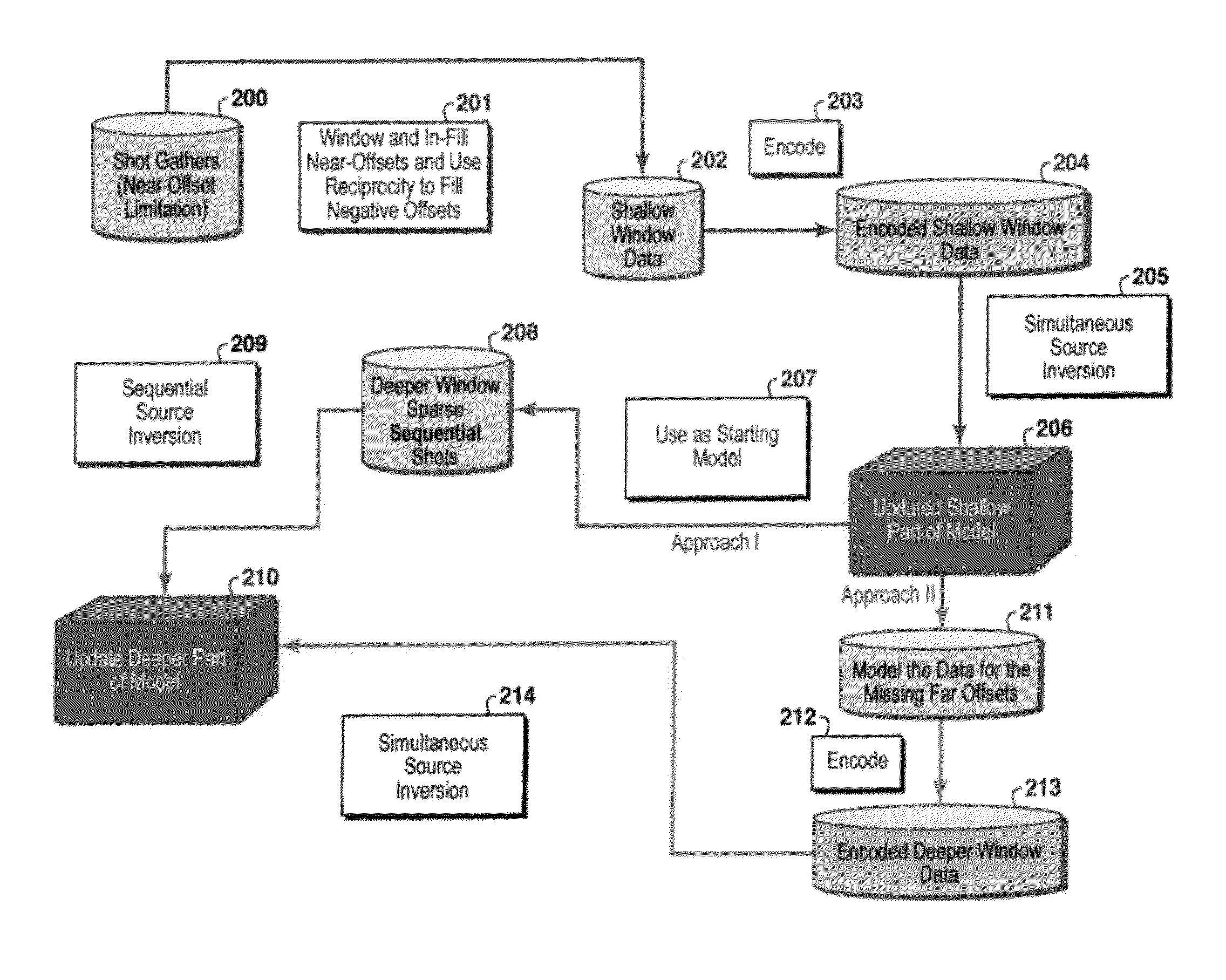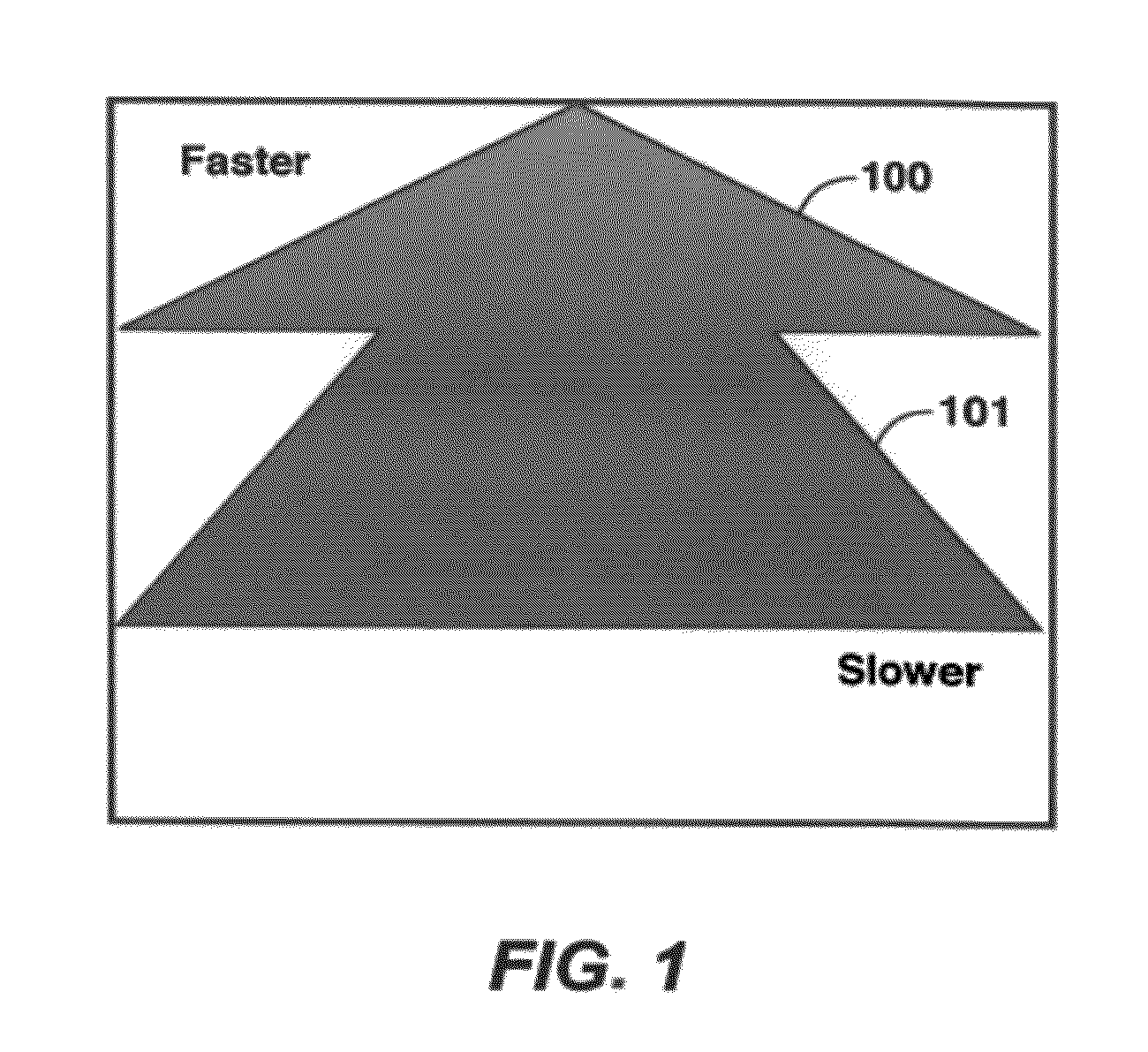Hybrid method for full waveform inversion using simultaneous and sequential source method
a source method and waveform technology, applied in the field of geophysical prospecting, can solve the problems of inability to apply it to many problems of interest, high computational cost of iterative inversion, and inability to solve many problems at on
- Summary
- Abstract
- Description
- Claims
- Application Information
AI Technical Summary
Benefits of technology
Problems solved by technology
Method used
Image
Examples
example
[0099]FIGS. 3-11 present a synthetic example of inverting constant-density acoustic seismic data using the hybrid approach of this invention when the fixed receiver assumption is violated. The results are compared with the simultaneous source inversion where the fixed receiver assumption is valid.
[0100]FIG. 3 is the true velocity model, i.e. the velocity model that will be used to generate synthetic data. The model has 500 m of water depth and the reservoir is depth of 3 km.
[0101]FIG. 4 shows an example of two far-offset limited representative shot gathers encoded using binary encoding described in PCT Patent Application Publication No. WO 2008 / 042081. The offset-limited nature of the shot gathers that is evident from the figure makes the fixed-receiver assumption invalid. However, it can also be seen that the fixed-receiver assumption is valid for the shallow time window from 0 to about 3 seconds. FIG. 4 shows that the receivers for the left shot between x=800 and x=2000 do not hav...
PUM
 Login to View More
Login to View More Abstract
Description
Claims
Application Information
 Login to View More
Login to View More - R&D
- Intellectual Property
- Life Sciences
- Materials
- Tech Scout
- Unparalleled Data Quality
- Higher Quality Content
- 60% Fewer Hallucinations
Browse by: Latest US Patents, China's latest patents, Technical Efficacy Thesaurus, Application Domain, Technology Topic, Popular Technical Reports.
© 2025 PatSnap. All rights reserved.Legal|Privacy policy|Modern Slavery Act Transparency Statement|Sitemap|About US| Contact US: help@patsnap.com



